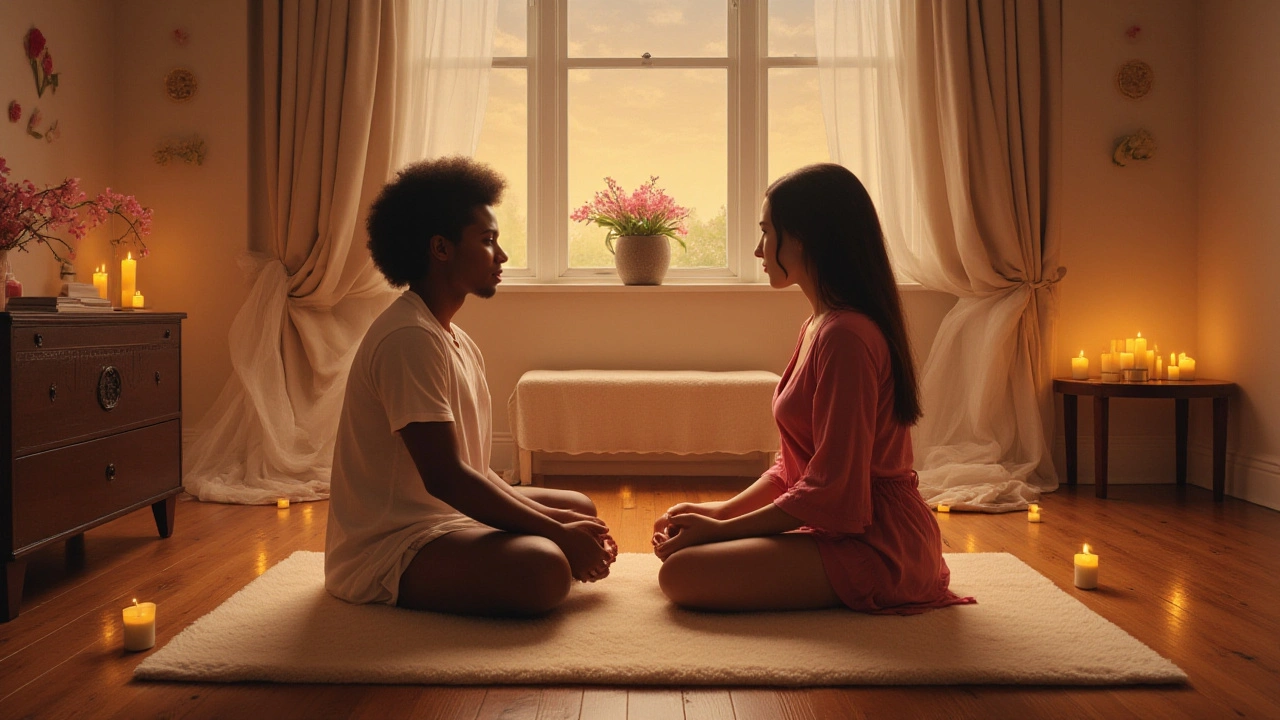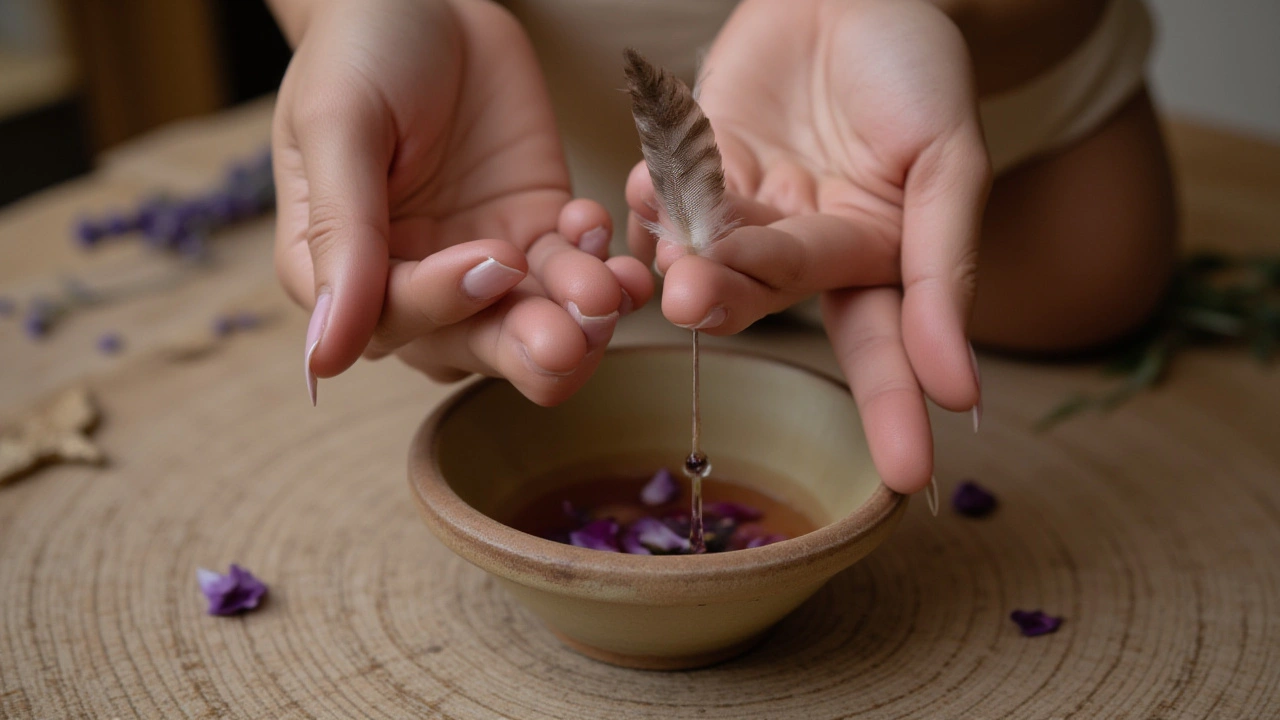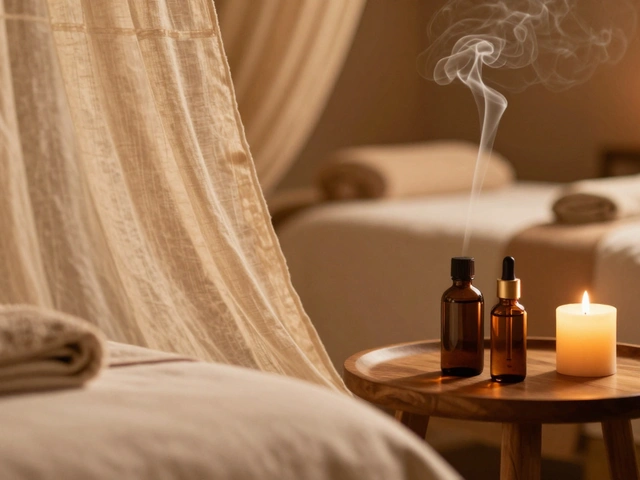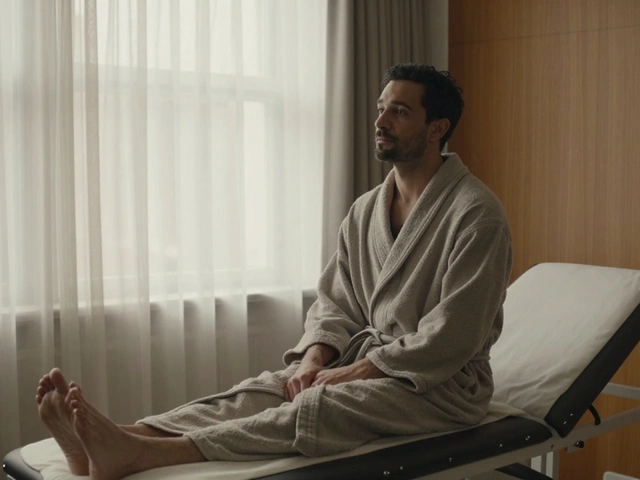How to Master the Art of Tantric Massage: Step-by-Step Guide & Essential Tips

How to Master the Art of Tantric Massage: Your Comprehensive Guide
Ever heard a friend rave about the mind-body bliss of tantric massage and wondered, "Wait, is it really as magical as they say?" Spoiler: Logic and sensuality can actually blend together here. Tantric massage isn’t just about relaxation—it’s about exploring deep connection, letting go of anxiety, and tuning into yourself (and maybe a partner) in ways that go far beyond the basics. Still, there are stereotypes out there—some think it’s only for the ultra-spiritual, or that it’s all about sex. In reality, the experience is so much more layered. In this guide, you’ll find out where it all started, why it’s unique, who can benefit from it, what really happens during a session, and how you can try it for yourself—right down to tips, prep, and what to expect. I’ll also tackle the common myths and safety essentials so you can approach it with confidence and respect. Curious? Let’s unravel the mystery together.
Understanding the Basics of Tantric Massage
Origins and History
The roots of tantric massage go back thousands of years, all the way to ancient India. Tantra itself is a spiritual philosophy, not a single practice. In the early days, practitioners used things like meditation, breathwork, yoga, and ritual touch to reach states of higher awareness—both alone and with a partner. Modern tantric massage borrows these ideas but is adapted for today’s world: it focuses on mindful touch and energy flow, blending old wisdom with a modern understanding of anatomy and emotional connection. Many people are drawn to tantric massage for its holistic approach; it doesn’t just work on tight muscles but aims to connect mind, body, and spirit in a way that’s mindful, respectful, and sometimes transformative.
Core Principles or Components
The foundation of tantric massage rests on a few key principles. Presence is everything—you’re not just rubbing muscles, you’re practicing conscious touch. Breath control plays a big role, helping energy flow through the body (think of it as charging your batteries). Movement is slow, intentional, and guided by intuition rather than following a script. Consent, boundaries, and respect aren’t just buzzwords; they shape the whole experience. Many sessions also include elements like sacred space (soft lighting, calming scents), intention-setting, and sometimes sound or music to help both giver and receiver relax fully.
How It Differs from Related Practices
You might wonder, "How is tantric massage different from, say, Swedish or deep tissue massage?" Well, while Swedish massage focuses on muscle relaxation and knots, and deep tissue goes after tension in the fascia, tantric massage zeroes in on energy flow, sensual awareness, and emotional release. Yes, it can feel just as relaxing, but it’s not all about kneading tight spots. For some people, it feels like a spiritual journey as much as a physical one. There’s sometimes overlap with sensual or erotic massage, but tantric massage is more about mindful connection and less about the goal.
| Practice | Key Feature | Primary Benefit |
|---|---|---|
| Tantric Massage | Energy focus, slow mindful touch | Holistic connection, emotional release |
| Swedish Massage | Smooth gliding strokes | Muscle relaxation, stress reduction |
| Deep Tissue Massage | Firm pressure, muscle work | Chronic tension relief |
| Erotic Massage | Sexual arousal focus | Pleasure, intimacy |
Who Can Benefit from Tantric Massage?
Here’s the beauty of tantra: anyone can give it a try, regardless of relationship status, gender, or experience. Beginners sometimes worry they need to meditate for hours or learn Sanskrit—nope! Curious individuals find value in exploring their own bodies, couples love the connection and trust it builds (a little vulnerability can go a long way), and even seasoned meditators find new layers to their practice. It’s suitable for all body types and ages (18+), and there’s no "one right way" to approach it—so you can tailor it to individual needs. People recovering from emotional stress, dealing with body image issues, or just needing to recharge after a tough week often report that tantra helps them feel more present, grounded, and open to joy.
Benefits of Tantric Massage for Mind and Body
Stress Reduction
Modern life is fast-paced, and stress is everywhere—work, relationships, even just watching the news. Tantric massage provides a dedicated time-out: slow, mindful touch soothes both the nervous system and the brain. Research points out that intentional touch (when practiced with awareness) lowers heart rate, releases the "relaxation hormone" oxytocin, and reduces levels of the stress chemical cortisol. The result? A more restful mind and a body that feels safe to relax.
Deeper Physical Connection
Unlike more clinical massages that just work on muscle tissue, tantric massage promotes full-body awareness. Users often describe feeling "tuned in" to their own bodies for the first time in years. Touch isn’t just about skin—it’s about feeling appreciated and cherished. Shared with a partner, it builds trust and intimacy, teaching both people to communicate and respond to what feels good, what’s too much, and what’s just right.
Emotional Balance
Here’s a not-so-secret side effect: sometimes, emotions bubble up during a session. That’s a good thing! Tantric traditions see the body as a storehouse of past feelings—joys, hurts, and even old stress. Mindful touch creates space for healthy release, helping some people let go of old baggage. This can lead to improved mood, resilience, and a sense of emotional closure.
Practical Applications
Beyond emotional and spiritual perks, tantric massage offers plenty of everyday benefits. People report better sleep, improved communication in relationships, heightened focus at work (yep, a calm brain is a productive brain), and a happier relationship with their own bodies. In a world that celebrates busyness, taking the time for mindful touch helps reset your nervous system so you come away refreshed. Here’s a snapshot of what you might experience:
| Benefit | Description | Impact |
|---|---|---|
| Stress Relief | Lowers anxiety, promotes relaxation | Calmer mood, better sleep |
| Emotional Release | Processes past emotions safely | Stable mood, self-acceptance |
| Deeper Intimacy | Enhances trust and connection | Stronger relationships |
| Improved Body Image | Mindful touch, self-acceptance | Positive self-view |
| Boosted Energy | Moves "stuck" energy in the body | Increased vitality |
What to Expect When Engaging with Tantric Massage
Setting or Context
Tantric massage usually takes place in a calming, private space—could be a professional studio, your living room, or a cozy corner of the bedroom. The environment matters: soft lighting (maybe candles), gentle background music, and soothing scents (think sandalwood, lavender) turn an ordinary room into a haven. Cleanliness and comfort are a must—clean sheets, fresh towels, and comfy pillows will do the trick. Privacy is key, especially for first-timers who might feel a little nervous.
Key Processes or Steps
Most tantric massage sessions begin with setting an intention (what do you hope to feel or explore?) and perhaps a short grounding meditation. Clothes are optional—whatever feels right. Touch always starts gently—long, slow strokes along the back, limbs, or chest. Breathwork is woven in: deep, synced breaths can help the body "let go" even more. Some sessions will include energy work, where the practitioner guides awareness across different energy centers of the body (often called chakras). There may be moments of stillness, eye contact, or shared breath if doing this with a partner.
Customization Options
No two sessions are alike—tantric massage is all about adapting to individual comfort zones and goals. You can skip some elements, focus more on hands or feet, or add in special oils or hot stones for variety. If you’re working with a partner, try switching roles or exploring different rhythms. Some folks mix in light massage tools or feather-like brushes for extra sensory layers. If the session is solo, it’s easy to adapt based on your energy and mood.
Communication and Preparation
Open, honest communication makes all the difference. Before starting, talk about preferences, boundaries, and any "no-go" zones. This will help create trust and ease. Get everything ready before you begin: lay out towels, oils, a water bottle, and anything else you might want close by. If you’re anxious, set a timer for how long you want the session to last. And don’t forget—bathroom breaks are your friend!
How to Practice or Apply Tantric Massage
Setting Up for Success
First things first: set the mood. This doesn’t mean turning your home into a day spa, but a few small touches go a long way. Dim the lights, turn down the phone, and queue up some ambient music. Grab soft towels, comfy pillows, and a high-quality massage oil (jojoba or coconut work well for most). If you’re sensitive to scents, choose an unscented base and add essential oils like ylang-ylang or rose only if you enjoy fragrance. Make sure to wash and warm your hands—cold palms are not the vibe!
Choosing the Right Tools/Resources
You don’t need a lot of fancy gear, but certain items can upgrade the experience. Massage oils (again, hypoallergenic and edible options if desired), bolsters or firm pillows for positioning, and a throw blanket for comfort. For beginners, a basic "tantric massage for beginners" book or reputable online guide can help build confidence. If you’re not sure where to start, look for certified therapists through organizations like the American Massage Therapy Association (AMTA) or local, well-reviewed wellness studios.
Step-by-Step Guide
- Set your intention—decide together (or solo) on your session’s focus.
- Prepare your space: clean, quiet, and cozy is key.
- Begin with a few deep breaths, noticing where you feel tense or relaxed.
- Apply a small amount of massage oil to your hands and warm it up.
- Start with gentle, slow strokes along the back, shoulders, or wherever feels most welcoming.
- Incorporate different techniques: circular motion, feather-light touches, or gentle kneading.
- Encourage the receiver to breathe deeply and give feedback about pressure and comfort.
- Explore energy points (chakras) by resting your hands and focusing on warmth, not pressure.
- Finish with a comforting embrace, shared gratitude, or quiet rest.
Tips for Beginners or Couples
Keep expectations realistic—this isn’t a magic fix, but rather an ongoing practice. Beginners should start slowly, using short sessions to build confidence before diving into longer or more complex routines. Scheduling regular "tantra nights" or solo sessions helps remove any pressure to perform. For couples, communicate openly before, during, and after about what feels good or awkward. Play with different techniques and don’t be afraid to laugh—sensual intimacy can be playful (think of it as a dance, not a chore). And, as with yoga, focusing on presence over perfection is where the magic happens. Tried these tips? Share your experience in the comments!

FAQ: Common Questions About Tantric Massage
What to expect from tantric massage?
Expect a gentle, mindful touch intended to help you relax and connect with your inner self or partner. A session might include soothing music, dim lighting, essential oils, and slow movements. Emotional release or a sense of deep calm is common. You’re always in control—speak up if anything feels off. Don’t expect instant transformation but do stay open to new sensations and connections, with or without a partner.
What happens during tantric massage?
Typically, the session starts with intention-setting and maybe a short meditation. The massage itself is slow-paced, moving from broad, sweeping touches to focused attention on energy points. You’ll hear gentle cues for breathwork and may be invited to share feedback. The goal isn’t to "fix" but to explore sensation and intimacy, so there’s often a feeling of deep relaxation. Sometimes, sessions end with verbal or silent gratitude, eye contact, or quiet stillness.
How does tantric massage differ from regular massage?
It’s less about working out muscle knots and more about presence, energy flow, and total-body awareness. Unlike a traditional massage, which uses routine strokes and doesn’t focus on breath or intimacy, tantric massage blends touch with mindfulness and often works with subtle energy points. There’s usually a shared focus on trust, communication, and the emotional state of both giver and receiver, making it a more holistic and sometimes emotional experience.
What is the method of tantric massage?
The core method is simple: slow, connected touch, lots of breathwork, and tuning into the body’s energy centers (chakras). Each session blends massage techniques, relaxation rituals, and open communication, always led by consent and comfort. There’s no "one size fits all," so expect sessions to adapt to needs and preferences—sometimes with added props or sensory elements, other times just with hands and focus.
Safety and Ethical Considerations
Choosing Qualified Practitioners/Resources
Not all massage therapists are trained in tantra—always look for credentials, reviews, or direct referrals before booking a session. Reputable organizations like the AMTA are good places to start. When hiring privately, check that practitioners are open to discussion, ask about your boundaries, and can provide a clear description of their approach.
Safety Practices
Hygiene is a must—fresh linens, clean hands, and disinfected surfaces help prevent infection or irritation. All parties should practice consent: check in regularly, use safe words, and respect all boundaries, even if it’s just a solo session. Don’t use oils or props you’re allergic to, and always keep water handy.
| Practice | Purpose | Example |
|---|---|---|
| Consent | Ensures comfort and respect | Ask, clarify boundaries |
| Cleanliness | Promotes health | Fresh sheets, clean towels |
| Open Communication | Avoids misunderstandings | Check-ins throughout session |
Setting Boundaries
Clear, direct boundaries are essential. It’s okay to say "no" or request changes—practitioner and receiver alike. For couples, setting rules before you begin will prevent surprises and build trust. With professionals, ask questions about what’s included and what’s not; no legitimate practitioner should ever pressure you to cross a comfort line.
Contraindications or Risks
Tantric massage isn’t for everyone. Avoid if you have open wounds, skin infections, or certain chronic health conditions unless your doctor gives the green light. Anyone processing trauma or emotional distress should approach slowly, possibly with therapist supervision. If you have significant mobility issues, adapt the session with pillows or chairs, or consider professional guidance. Always check with a healthcare provider if you’re unsure—results and comfort levels can vary a lot.
Enhancing Your Experience with Tantric Massage
Adding Complementary Practices
Want deeper results? Pairing tantric massage with meditation, mindful breathing, or gentle yoga can help boost relaxation and self-awareness. Simple stretches before starting get the body warmed up.
Collaborative or Solo Engagement
Tantric massage is just as powerful solo as it is with a partner. For couples, set aside regular time for sessions, rotate giver and receiver roles, and keep things fresh with new techniques. For solo practice, add in eye-gazing exercises (in a mirror, or just closing your eyes) to deepen connection with your own body. Tried going solo? Let us know how it went in the comments.
Using Tools or Props
Accessories like soft brushes, feathers, or textured massage stones can add delightful surprise. Weighted blankets or calming eye masks help deepen relaxation. Always introduce new props gently, checking for sensitivities first.
Regular Engagement for Benefits
Like most wellness practices, consistency is key. Set a weekly or monthly ritual to really notice results—better sleep, less anxiety, or more harmonious relationships. For some, keeping a brief journal afterward helps track emotional or physical shifts. Looking for more ways to enrich your relaxation routine? Follow my blog for weekly wellness tips.
Finding Resources or Experts for Tantric Massage
Researching Qualified Experts/Resources
Start with well-known massage directories, or ask friends for recommendations. Look for therapists who specialize in tantra and hold certifications from reputable bodies. Detailed websites and a professional approach are good signs.
Online Guides and Communities
There’s a growing number of ethical, inclusive websites and forums where you can ask questions, share your journey, or take guided video classes. Reputable platforms sometimes offer online workshops with certified teachers. User reviews and moderated comment sections add credibility.
Legal or Cultural Considerations
Tantric massage holds different meanings in different cultures. Some countries have strict regulations about massage or sexuality—always check local laws and guidelines before seeking out practitioners. Even in places where tantra is popular, ethical behavior and consent set professionals apart. Stay informed and respectful of local customs.
Resources for Continued Learning
Ready to dive deeper? Consider books by well-regarded tantra teachers, or sign up for in-person workshops at yoga studios or sexual wellness centers. Many communities host events and retreats—just make sure they’re reputable and inclusive. Looking for resources or book recs? Drop a comment and I’ll share a few trusted favorites.
Conclusion: Why Tantric Massage is Worth Exploring
A Path to Whole-Body Wellness
Tantric massage offers a rare mix of relaxation, connection, and personal growth. By combining ancient wisdom with modern mindfulness, it brings a new flavor of wellness—one that’s as much about trust and openness as it is about touch. Whether you’re looking to deepen your relationship with yourself or someone else, or just need a stress-busting ritual, tantra is worth exploring.
Try It Mindfully
Stay open, move slow, and listen to what your body (and any partner) is telling you. If you’re new, don’t be afraid to ask for professional guidance… and remember, awkwardness is a natural part of learning! Sustainable change comes from steady, thoughtful practice.
Share Your Journey
Have you tried tantric massage? What was your experience? Drop your story in the comments, or follow my blog for more down-to-earth tips on wellness and connection. Ready to give tantra a try? Explore, keep an open mind, and report back—you might just find a new favorite way to recharge.
Some links may be affiliate links, but all recommendations are based on research and quality.






